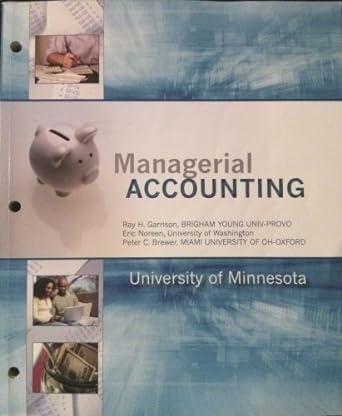Question
Jackson has the choice to invest in city of Mitchell bonds or Sundial, Inc. corporate bonds that pay 5.6 percent interest. Jackson is a single
Jackson has the choice to invest in city of Mitchell bonds or Sundial, Inc. corporate bonds that pay 5.6 percent interest. Jackson is a single taxpayer who earns $47,500 annually. Assume that the city of Mitchell bonds and the Sundial, Inc. bonds have similar risk. What interest rate would the city of Mitchell have to pay in order to make Jackson indifferent between investing in the city of Mitchell and the Sundial, Inc. bonds for 2019? (Use tax rate schedule)
2019 Tax Rate Schedules
Individuals Schedule X-Single
| If taxable income is over: | But not over: | The tax is: |
| $ 0 | $ 9,700 | 10% of taxable income |
| $ 9,700 | $ 39,475 | $970 plus 12% of the excess over $9,700 |
| $ 39,475 | $ 84,200 | $4,543 plus 22% of the excess over $39,475 |
| $ 84,200 | $160,725 | $14,382.50 plus 24% of the excess over $84,200 |
| $160,725 | $204,100 | $32,748.50 plus 32% of the excess over $160,725 |
| $204,100 | $510,300 | $46,628.50 plus 35% of the excess over $204,100 |
| $510,300 | $153,798.50 plus 37% of the excess over $510,300 |
Schedule Y-1-Married Filing Jointly or Qualifying Widow(er)
| If taxable income is over: | But not over: | The tax is: |
| $ 0 | $ 19,400 | 10% of taxable income |
| $ 19,400 | $ 78,950 | $1,940 plus 12% of the excess over $19,400 |
| $ 78,950 | $168,400 | $9,086 plus 22% of the excess over $78,950 |
| $168,400 | $321,450 | $28,765 plus 24% of the excess over $168,400 |
| $321,450 | $408,200 | $65,497 plus 32% of the excess over $321,450 |
| $408,200 | $612,350 | $93,257 plus 35% of the excess over $408,200 |
| $612,350 | $164,709.50 plus 37% of the excess over $612,350 |
Schedule Z-Head of Household
| If taxable income is over: | But not over: | The tax is: |
| $ 0 | $ 13,850 | 10% of taxable income |
| $ 13,850 | $ 52,850 | $1,385 plus 12% of the excess over $13,850 |
| $ 52,850 | $ 84,200 | $6,065 plus 22% of the excess over $52,850 |
| $ 84,200 | $160,700 | $12,962 plus 24% of the excess over $84,200 |
| $160,700 | $204,100 | $31,322 plus 32% of the excess over $160,700 |
| $204,100 | $510,300 | $45,210 plus 35% of the excess over $204,100 |
| $510,300 | $152,380 plus 37% of the excess over $510,300 |
Schedule Y-2-Married Filing Separately
| If taxable income is over: | But not over: | The tax is: |
| $ 0 | $ 9,700 | 10% of taxable income |
| $ 9,700 | $ 39,475 | $970 plus 12% of the excess over $9,700 |
| $ 39,475 | $ 84,200 | $4,543 plus 22% of the excess over $39,475 |
| $ 84,200 | $160,725 | $14,382.50 plus 24% of the excess over $84,200 |
| $160,725 | $204,100 | $32,748.50 plus 32% of the excess over $160,725 |
| $204,100 | $306,175 | $46,628.50 plus 35% of the excess over $204,100 |
| $306,175 | $82,354.75 plus 37% of the excess over $306,175 |
Step by Step Solution
There are 3 Steps involved in it
Step: 1

Get Instant Access to Expert-Tailored Solutions
See step-by-step solutions with expert insights and AI powered tools for academic success
Step: 2

Step: 3

Ace Your Homework with AI
Get the answers you need in no time with our AI-driven, step-by-step assistance
Get Started


